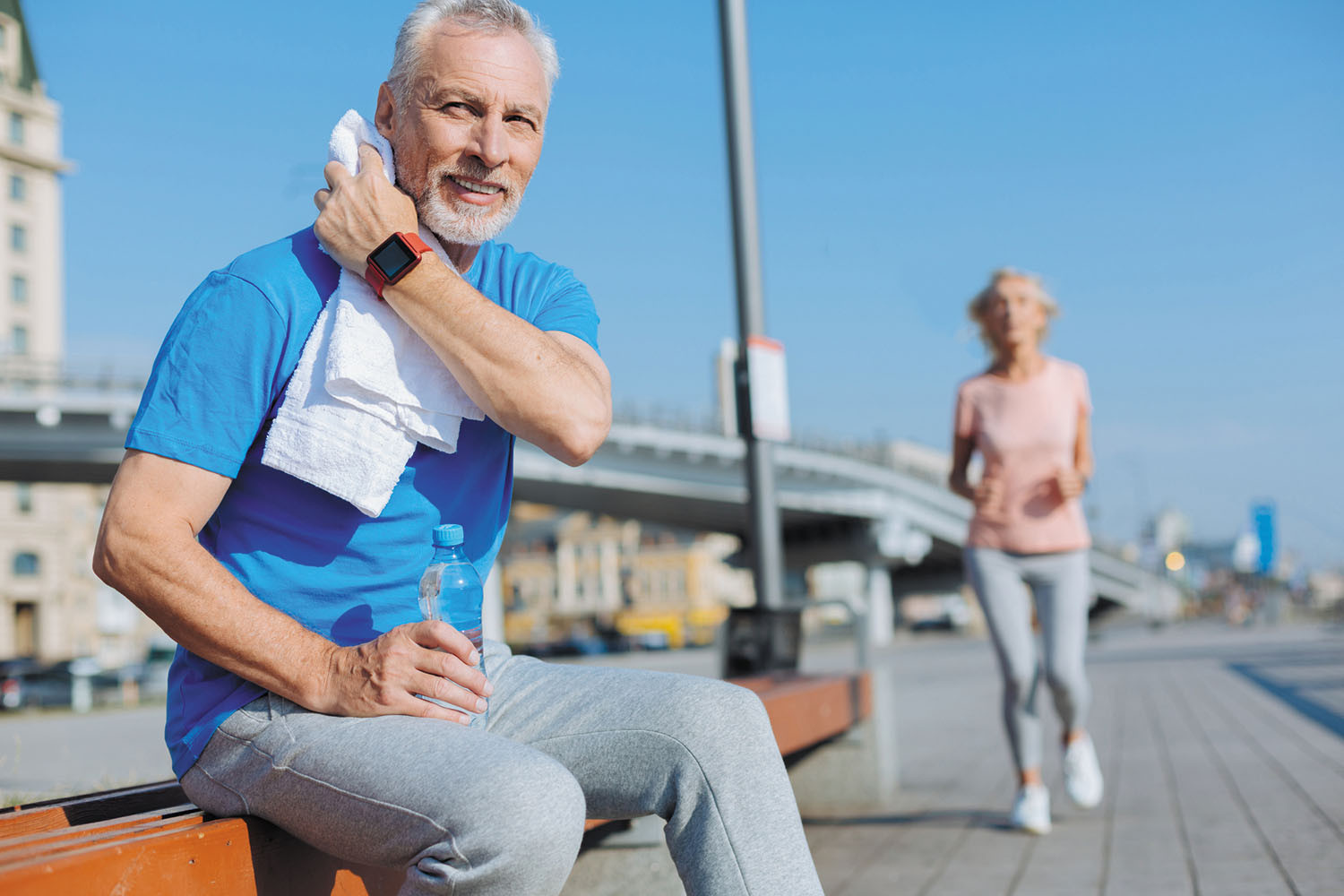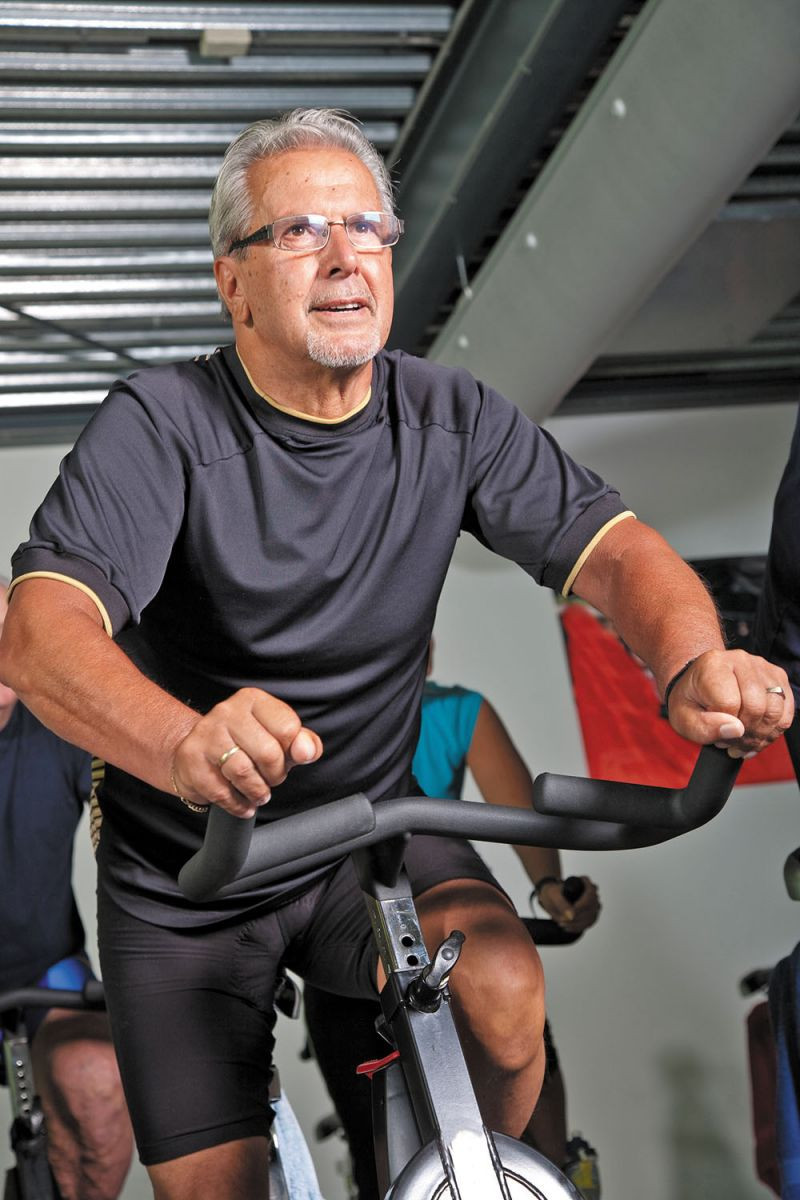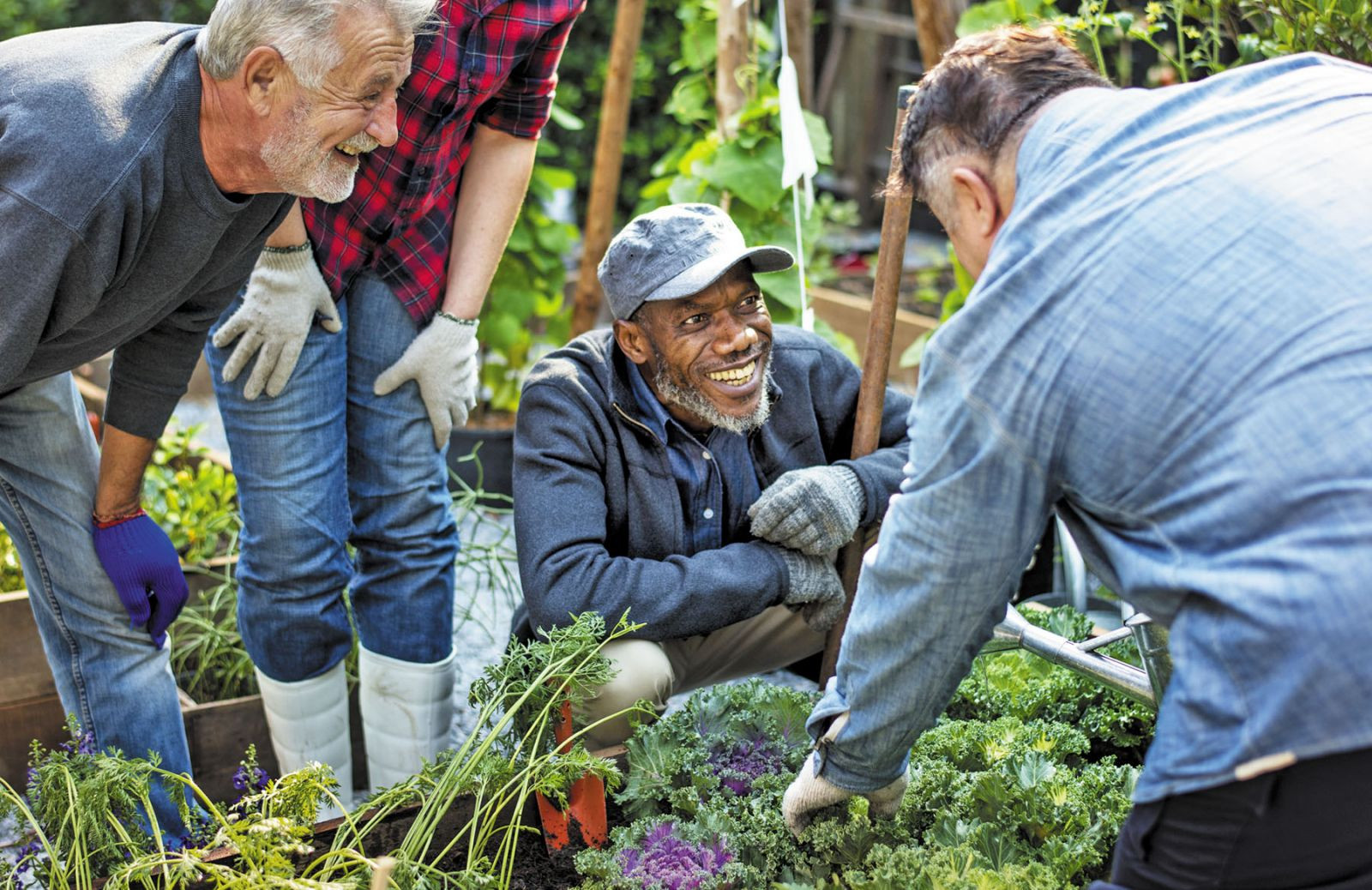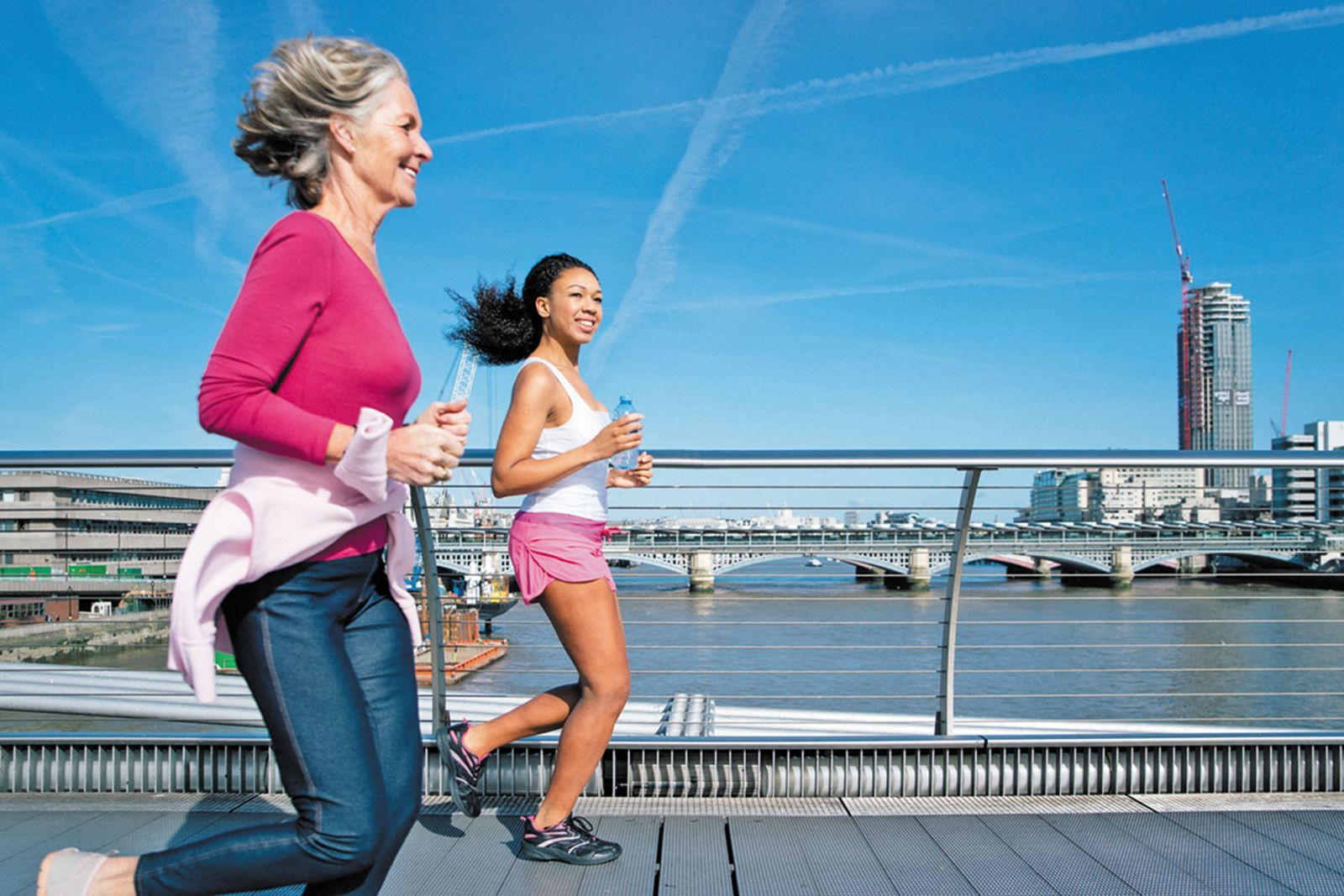
5 timeless habits for better health

What are the symptoms of prostate cancer?

Is your breakfast cereal healthy?

When pain signals an emergency: Symptoms you should never ignore

Does exercise give you energy?

Acupuncture for pain relief: How it works and what to expect

How to avoid jet lag: Tips for staying alert when you travel

Biofeedback therapy: How it works and how it can help relieve pain

Best vitamins and minerals for energy

Should you take probiotics with antibiotics?
Exercise & Fitness Archive
Articles
Exercise still the best approach to prevent falls
News briefs
Image: © Steve Debenport/Getty Images
Regular exercise in older adults offers powerful protection against falls. That's the conclusion of the U.S. Preventive Services Task Force (USPSTF), published online April 17, 2018, by the Journal of the American Medical Association. Task force members reviewed the latest evidence (about 20 studies) and said there was enough to confirm that exercising, muscle strengthening, and improving balance could help prevent falls in high-risk older adults. Most people in the studies exercised three times a week. The benefit remained the same whether people performed individual routines, participated in exercise classes, or underwent physical therapy. The USPSTF also recommended that doctors offer additional measures to prevent falls, depending on a person's risks (like getting an eye exam if you have poor vision). And the task force found that taking vitamin D did not prevent falls in older adults, so it is recommending against taking a supplement just for that purpose. (Vitamin D is important if you have osteoporosis or vitamin D deficiency.) The takeaway: Falls are the leading cause of injury and injury-related death in older adults. If you're not active, try walking a little each day (if your doctor says it's okay), and build toward walking at least 20 minutes per day.
Guard your heart during the dog days of summer
Heat, humidity, and haze can be rough on your heart.
Image: © yacobchuk/Getty Images
Summer's long, sunny days often entice people to spend more time exercising outdoors. While being more physically active is great for your heart, it's important to exercise caution when the temperature and humidity rise.
"You hear stories about football players collapsing when they do strenuous workouts in hot weather, probably because they're not drinking enough fluid," says Dr. Adolph M. Hutter, professor of medicine at Harvard Medical School. However, hot weather can affect non-athletes as well. "For the average person, just walking on a golf course when it's 100° with high humidity is stressful for the cardiovascular system," he says.
Exercise may help outrun a family risk for heart disease
Research we're watching
Staying physically fit helps lower your risk of heart disease — even if the condition runs in your family, a new study finds.
Researchers relied on data from nearly half a million middle-aged and older adults in the United Kingdom. Over the six-year study, people with high levels of grip strength, self-reported physical activity, and cardiorespiratory fitness (as measured by a stationary bike test) were less likely than others to have a heart attack or stroke. That was true even among people with high genetic risk, based on whether they carried certain gene variants that have been linked to heart disease.
3 posture tips to get the most out of a core workout
Good posture is important, even during exercise. Quick posture checks before and during a core exercise routine can help you avoid injury and squeeze the biggest benefit from your workout. Here is what you need to know:
- Stand up straight. When instructions for an exercise ask you to stand up straight, that means keeping your:
- chin parallel to the floor
- shoulders even (roll them up, back, and down to help achieve this)
- arms at your sides, elbows relaxed and even
- abdominal muscles pulled in
- hips even
- knees even and pointing straight ahead
- feet pointing straight ahead
- body weight evenly distributed on both feet.
- Stay in neutral. Neutral alignment means keeping your body in a straight line from head to toe except for the slight natural curves of the spine. Whether you're standing or seated, that means your spine is not flexed or arched to overemphasize the curve of the lower back. One way to find neutral is to tip your pelvis forward as far as is comfortable, then tip it backward as far as is comfortable. Neutral is roughly in the middle. If you're not used to standing or sitting up straight, it may take a while for this to feel natural. A neutral wrist is firm and straight, not bent upward or downward.
- Get the angle. When angles appear in exercise instructions, visualize a 90-degree angle as an L. To visualize a 30-degree angle, mentally slice the 90-degree angle into thirds, or picture the distance between a clock's minute hand and hour hand at one o'clock.
Achieving and maintaining good posture during your workouts takes a little practice. If possible, look in a mirror when exercising. Try to take a few moments each day to practice better posture, too.
Working later in life can pay off in more than just income
Benefits such as mental stimulation and social engagement are associated with staving off chronic disease.
Image: © Rawpixel/Getty Images
Punching a time clock is still part of the regular routine for an increasing number of older adults. They're staying employed or going back to work, even though they're beyond the traditional retirement age of 65.
"For well over 100 years, men had been retiring at earlier and earlier ages. Something shifted in the 1990s, and they began working longer. The story for women is different. They weren't always in the labor force. But now we see employment rates rising for women at every age," says Nicole Maestas, an associate professor of health care policy at Harvard Medical School. She studies the economics of aging, health, and disability.
Midlife fitness linked to less dementia later in life
Research we're watching
Image: © radyreese/Getty Images
High cardiovascular fitness during middle age may lower the likelihood of dementia late in life, according to a decades-long study.
For the study, researchers asked 191 middle-aged women to ride an exercise bike until they were exhausted. They then grouped the women according to their peak cardiovascular capacity. Just 40 women met the criteria for high fitness, while 92 were in the medium category, and 59 were in the low category.
A personalized approach to preventing Alzheimer’s disease
These strategies may offer greater protection.
Image: © shapecharge/Getty Images
While there's no cure for Alzheimer's disease, ongoing research has suggested there may be ways to lower your risk.
"Much of the existing science supports how certain behavioral changes made in middle age can protect people as they grow older," says Dr. Kirk Daffner, director for the Center for Brain/Mind Medicine at Harvard-affiliated Brigham and Women's Hospital. "However, there is evidence that adopting certain healthy lifestyle habits can benefit older adults too."
Mini workouts can add up to better health
Research we're watching
Image: © RoBeDeRo/Getty Images
Good news for people who struggle to find time for exercise: every little bit matters, even if your "workout" is broken up throughout the day. To come to this conclusion, researchers who published their results March 23 in the Journal of the American Heart Association looked at data from 4,840 people ages 40 and older who participated in the National Health and Nutrition Examination Survey from 2003 to 2006. People who spent the shortest amount of time in moderate or vigorous activity — 20 minutes or less daily — had the highest risk of dying during the roughly six-year follow-up period. But those who got at least an hour of moderate or vigorous activity cut that risk in half, and those who got at least 100 minutes a day cut their death risk by 76%. And they didn't have to get those 100 minutes all at once. Even short bursts of activity at different points in the day added up to reduced risk.
Obesity is complicated — and so is treating it
Along with the growing realization that obesity is a complex disease comes greater understanding that treatments need to be highly individualized and address the physical and emotional factors that contribute to it.
Are weight-loss drugs worth trying?
Image: Bigstock
Newer medications, which may be safer than earlier drugs, have expanded the options for treating obesity.
Obesity is now considered more than a risk factor for other conditions; it's a disease itself. It has been the subject of intense scientific and medical research to develop effective treatments. But the quest has been elusive.

5 timeless habits for better health

What are the symptoms of prostate cancer?

Is your breakfast cereal healthy?

When pain signals an emergency: Symptoms you should never ignore

Does exercise give you energy?

Acupuncture for pain relief: How it works and what to expect

How to avoid jet lag: Tips for staying alert when you travel

Biofeedback therapy: How it works and how it can help relieve pain

Best vitamins and minerals for energy

Should you take probiotics with antibiotics?
Free Healthbeat Signup
Get the latest in health news delivered to your inbox!
Sign Up











